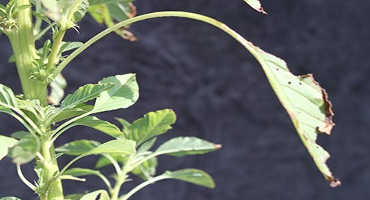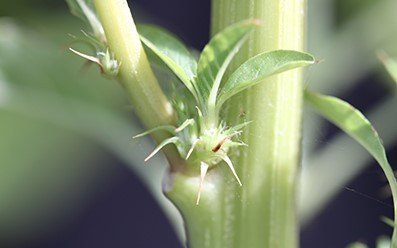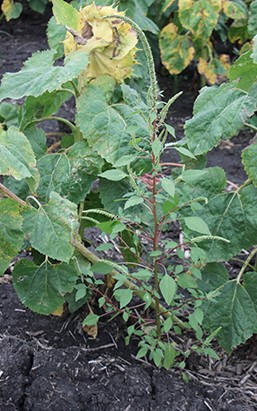SDSU Extension staff encourages farmers, ranchers and other landowners to scout for Palmer Amaranth, a weed that has been rapidly spreading north in the U.S. and is likely to be Glyphosate resistant.
"Now is the time to scout for Palmer Amaranth," said Paul O. Johnson, SDSU Extension Weed Science Coordinator. "In most cases, Palmer Amaranth should be about fully grown which is when it is easiest to Identify."
It's been about three years since the first Palmer Amaranth (Amaranthus palmen) was found in South Dakota since that time, the weed has been confirmed in 12 sites throughout the state.
Palmer Amaranth is in the pigweed family. Johnson said the weed has a lot of close relatives in the pigweed family which can easily be confused for Palmer Amaranth.
"Common waterhemp is the pigweed cousin most commonly confused with Palmer Amarant," he said, adding that spiny pigweed, tumble pigweed, smooth pigweed and redroot pigweed can also be confused with Palmer Amaranth.
What to look for when scouting
When scouting for Palmer Amaranth, Johnson says the key indicators that a weed is Palmer Amaranth are as follows:
• Some of the petioles (the short stem from the main stem to the leaf) will be a lot longer than the leaf length;
• The area where the stem connects to the petioles will have spines on it;
• On Palmer Amaranth, the leaf is more cordate (heart shaped) than waterhemp which is more elliptic (oblong); and
• The Palmer Amaranth head will be long and if it is female, the plant will also be spiny.
"There is no one thing to look for that is a sure sign in all cases the plant is Palmer Amaranth," Johnson said. "It seems like we are more likely to find it in areas that have stress periods."
So far, the weed has been found in the central South Dakota. Usually found in sunflower or soybean fields.
If you suspect to have Palmer Amaranth, Johnson urges you to take photos of the entire plant, the leaf and petiole area, the stem and petiole area, as well as a picture of the seed head.

Palmer Amaranth, pictured here, have a longer petiole than leaf. Waterhemp is just the opposite

Palmer has this spiny growth between stem and petiole. Waterhemp does not.

Small Palmer plant in sunflower field.
Source: Igrow